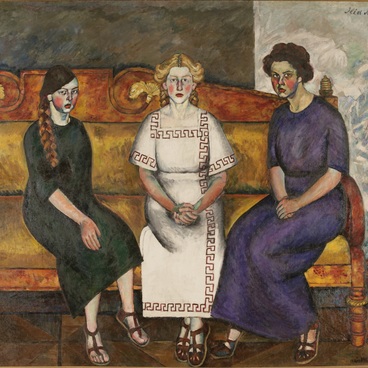Reforms made by the Russian Emperor Peter I affected not only the state system, but also influenced the active development of secular art. In the time of Peter the Great, Russian painting acquired new technical means - a direct perspective transmitting depth and volume to a plane image. The artists examine the relationship between light and color, the use of light as a structural tool for volume and space. New secular genres, such as the portrait, start evolving.
According to art-historians, ‘the art from that epoch is characterized by the interweaving of traditional and modern, Russian and foreign features. The art produced during Peter’s era bears a high level of affirmation. Central topic is the human being, and the main genre is the portrait’. The artists transmitted the image of the era by depicting their contemporaries. In works of this particular genre, there are compositional schemes, coloristic techniques, and stylistic approaches that were previously unknown.
The succinct and expressive “Portrait of an Unknown Person with the Order of Alexander Nevsky” of the 1720s, gives an idea of the portrait tradition of that time. The most highly valued qualities of a statesman who is devotedly serving the motherland were that of intelligence, courage, military and diplomatic talent. This work is an example of a semi-ceremonial portrait, which contains a half-length image of a man, a dark neutral background, and the absence of symbolic accessories. At the same time there is a representative pose, the top-down glance at the viewer and the insignia of honor.
Art historians are still unable to reveal the name of the character. The features of the uniform and the shape of the wig let the researchers date the picture to the second half of the 1720s. The depicted officer has a rank not lower than a lieutenant general of the Preobrazhensky, Semenovsky or Izmailovsky life-guard regiments. On the chest of the man is a silver star and a red ribbon of the Order of Saint Alexander Nevsky, the state award of the Russian Empire, established in 1725. Only high military and civilian ranks could receive it.
According to art-historians, ‘the art from that epoch is characterized by the interweaving of traditional and modern, Russian and foreign features. The art produced during Peter’s era bears a high level of affirmation. Central topic is the human being, and the main genre is the portrait’. The artists transmitted the image of the era by depicting their contemporaries. In works of this particular genre, there are compositional schemes, coloristic techniques, and stylistic approaches that were previously unknown.
The succinct and expressive “Portrait of an Unknown Person with the Order of Alexander Nevsky” of the 1720s, gives an idea of the portrait tradition of that time. The most highly valued qualities of a statesman who is devotedly serving the motherland were that of intelligence, courage, military and diplomatic talent. This work is an example of a semi-ceremonial portrait, which contains a half-length image of a man, a dark neutral background, and the absence of symbolic accessories. At the same time there is a representative pose, the top-down glance at the viewer and the insignia of honor.
Art historians are still unable to reveal the name of the character. The features of the uniform and the shape of the wig let the researchers date the picture to the second half of the 1720s. The depicted officer has a rank not lower than a lieutenant general of the Preobrazhensky, Semenovsky or Izmailovsky life-guard regiments. On the chest of the man is a silver star and a red ribbon of the Order of Saint Alexander Nevsky, the state award of the Russian Empire, established in 1725. Only high military and civilian ranks could receive it.



